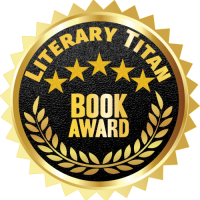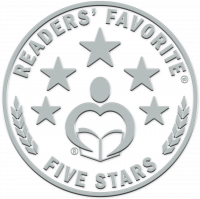What initially drew you to the world of storytelling, particularly the genre of fast-paced adventures?
Storytelling has been a part of my life since childhood. Growing up, tales of adventure enchanted me and I found myself drawn to the thrill of fast-paced narratives that keep readers (like me) on the edge of their seats. As an avid reader, stories that whisk me away to distant lands and immerse me in thrilling stories have always captivated me.
Thanks to my excellent history and literature teachers, I’ve kept my interest in the subject.
And also, my son.
I’ve found that 7-year-old boys, besides playing with knight figures, really like a game that is backed up with a good story. Especially if it’s based on a real one. Bed time stories with the never-ending question > What happened next?
Once I signed up for a course to strengthen my communication and writing abilities, I discovered my true enjoyment for writing and the research process.
How do you balance your career as an engineer with your passion for writing thrilling narratives?
It’s difficult. Finding a balance between being a dedicated parent, succeeding in your profession, and making time for your interests requires making sacrifices. It is challenging. But I’ve figured out that spending 20 minutes writing every day works for me.
Could you share some insights into your creative process? How do you brainstorm ideas and develop them into full-fledged stories?
I read every interesting story I find. The research process is something that I have discovered I really enjoy. Additionally, I employed a mind mapping technique. On one piece of paper, I sketch a map, write down character names, and note story keywords using a pencil. Here is where I start. This is where the fun begins. Similar to a detective’s journal.
Your stories often feature intricate plot twists. How do you ensure these twists remain unexpected yet satisfying for your readers?
I’m not sure, to be honest. Occasionally, I had prior knowledge of what would occur, as it lives in my thoughts, my imagination. At times, while writing, I find myself compelled to add or change elements that would make the characters seem like real individuals. Like, even 800 years ago.
How has your background in engineering influenced your approach to storytelling, if at all?
I have a natural curiosity, and once I determine the path the story will take, I enjoy creating a plan because I like to be organized. To follow my plan.
Your love for history is evident in your works. How do you research historical elements and incorporate them into your narratives?
Thanks to my exceptional history and literature teachers, as I mentioned earlier, my interest in the subject has remained intact. I go all in when it comes to research. I read a ton, from books to articles, even some stuff translated from ancient sources.
Discovering the people and circumstances of 800 years ago is truly fascinating. The way people spoke and wrote letters in 1272 was truly fascinating to me. The language and vocabulary from that era were far more elaborate and diverse compared to modern times. We just text something short via different mobile apps.
Sometimes I catch myself thinking we, the people, will never change. There are always fights and struggles for power, for richness, and for love. There are always battles, betrayals, and belongings. Even thousands of years ago. Today, only technologies are different, and the language is simple, but people are the same with their passions, desires, and sins. Is there a hope for a better world in a thousand years after us? I hope so.
As a devoted father, how do your children inspire your storytelling? Are there any particular moments or experiences with them that have directly influenced your work?
Well, I’m a simple man and a father. I try every single day to be interesting for my children, telling them exciting stories. One day with my son, we organized a crime investigation table and created a mind map like in the movies. We showed it to his sister, and she wanted a princess to be involved. So, I have to add a princess.
There is a moment when you realize that the more your children grow, these precious moments we spend together and we laugh, discuss and talk become even more rare.
In your opinion, what makes a truly memorable protagonist in a fast-paced adventure story?
When the protagonist has a cause worth fighting for and something precious at stake. When confronted with dilemmas and decisions. The resonance that people feel is due to the way the protagonist bravely faces challenges and makes sacrifices, I believe.
Many readers appreciate the escapism provided by your novels. How do you ensure your stories transport readers to different worlds while still maintaining a sense of realism?
I try to ensure that they are interesting not only to me but also to my children. Because I’m also a reader and storyteller, after all.
Could you tell us about any challenges you’ve faced in writing your novel, “Longsword: Edward and the Assassin”?
The biggest difficulty I faced was finishing it. The process of writing my first book was a journey of new discoveries. In addition, the process involves editing, rewriting, publishing, collaborating with designers, and considering advice and comments from others.
Your books have achieved international success. How does it feel to know that your stories have resonated with readers all around the world?
I found it strange when a friend of mine shook my hand and congratulated me, admitting that he had never personally met an author whose books are read by people around the world in different languages.
It was unexpected, but the thought of it always brought a smile to my face.
How did you come up with the idea for the book, “Oathbreaker”?
There are two major ingredients behind my inspiration for my book, Oathbreaker. The first one is an article I read about archaeological excavations close to St Louis’ castle in Sidon, Lebanon. It has revealed two mass grave deposits containing partially articulated and disarticulated human skeletal remains.
No less than 25 male individuals have been recovered, with no females or young children. Radiocarbon dating of the human remains, a crusader coin, and the design of Frankish belt buckles found on the site strongly indicate that they belong to a single event in the mid-13th century. The skeletal remains show a high prevalence of unhealed sharp force, penetrating force, and blunt force trauma, consistent with medieval weaponry.
What happened back there? What If they had a chance? Why? Who is responsible?
I tried to investigate and tell that story through Peter’s eyes. His fate isn’t ordinary, as he is part of the Crusaders and a blood-brother of the sultan.
The other ingredient, well, I’m a father. I try every single day to be interesting for my children, telling them exciting stories. I like ships. My children, because of me, like ships, too. So together, we added a ship. To be precise, two ships in the story.
How do you approach the task of world-building in your novels, particularly when creating fantastical settings or alternate realities?
Nothing fancy, to be honest. I do my research and try to imagine what would be back there.
Can you provide any hints or teasers about your upcoming projects or novels?
Peter, Red Herring, and his followers will go rogue. That’s all I can say for now. I am almost finished with the first draft of my next project. Then, as usual, I’ll rewrite it again, some self-editing and editing. I hope the next book will be ready for release before the end of the year.
What has your AllAuthor experience been like so far? What are some highlights?
AllAuthor has been a highly positive experience, supporting authors like myself. The platform offers a range of tools and features to help authors promote their work, connect with readers, and expand their audience.




















